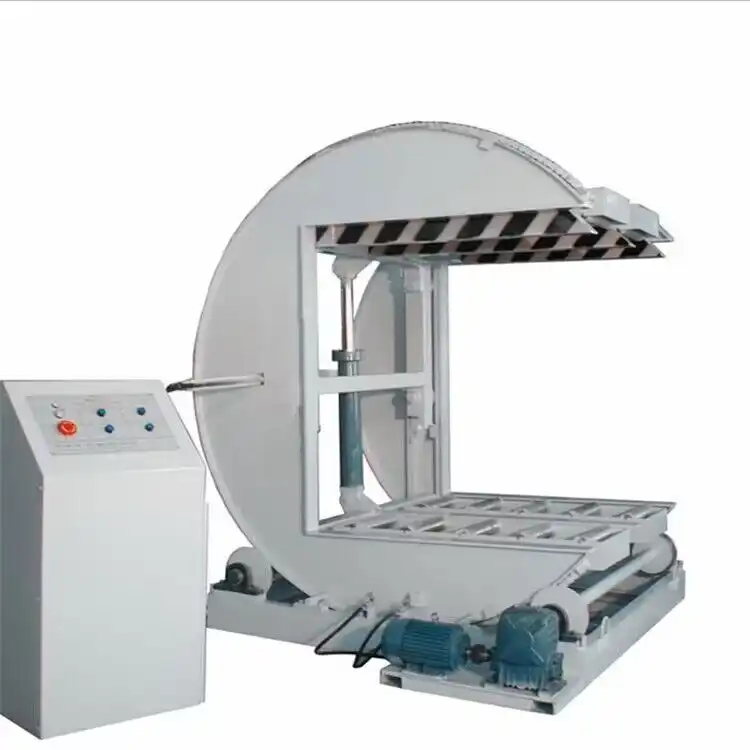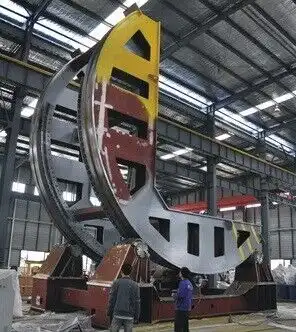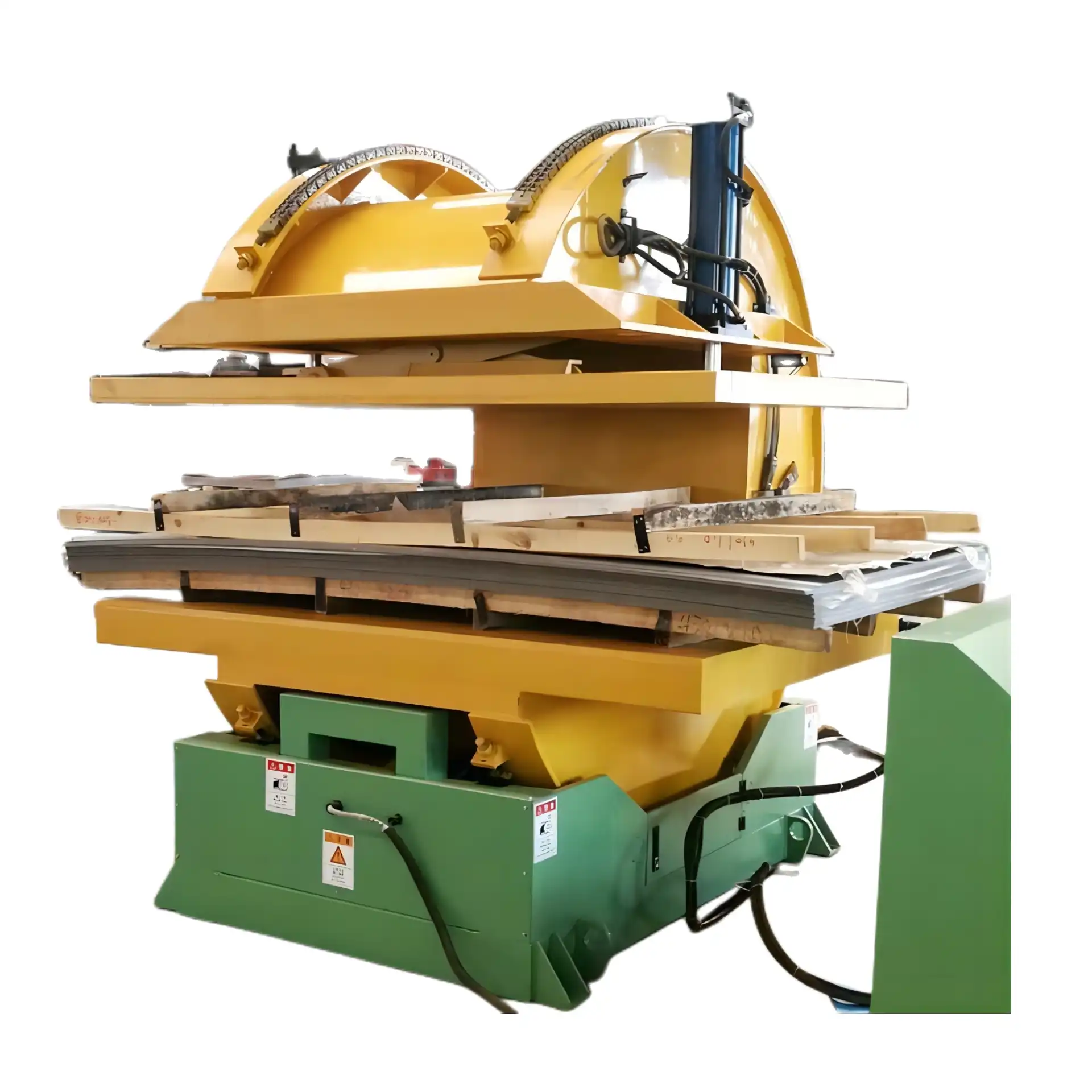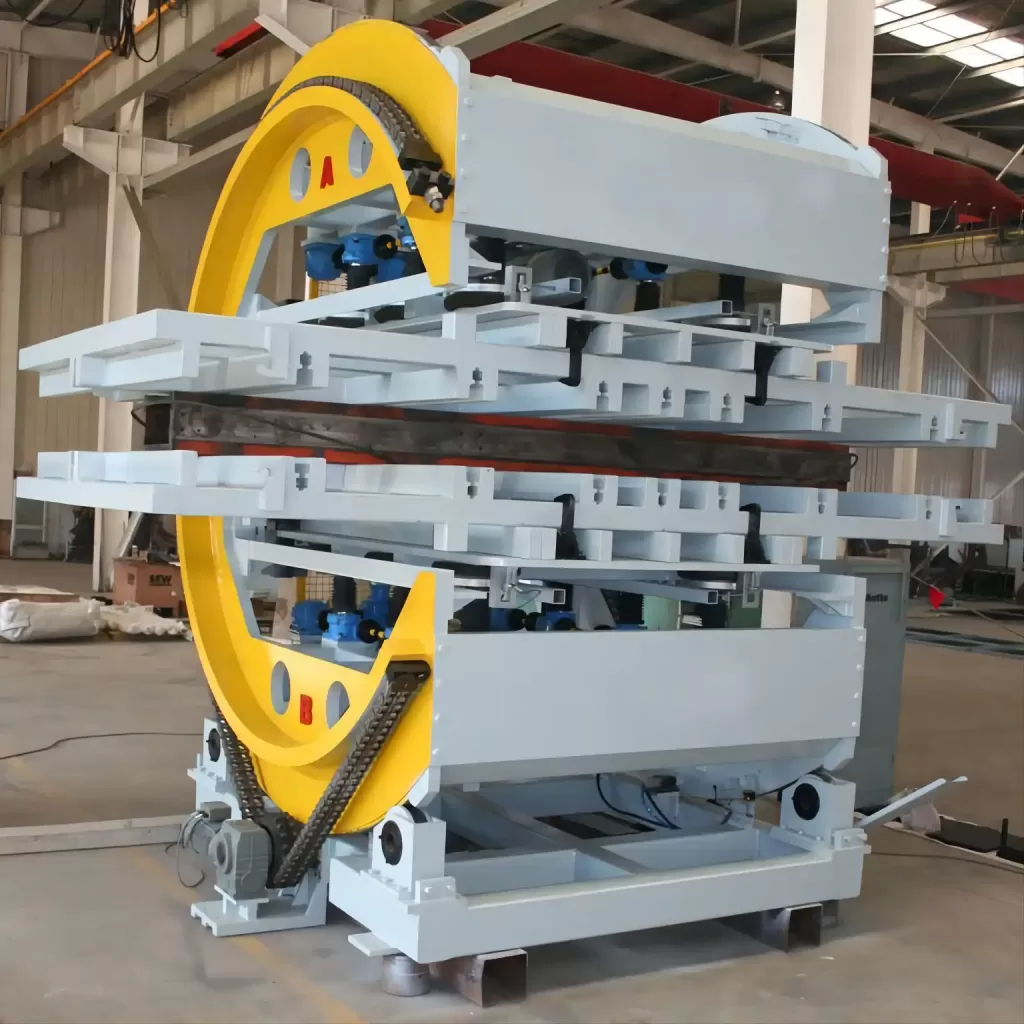What Testing Protocols Ensure Coil Upender Compliance With International Standards?
Are you losing sleep over coil upender safety and compliance? Accidents, fines, and damaged reputations are nightmares for any operation. Wouldn't it be a relief to know your coil upender meets every international safety standard? This article dives deep into the testing protocols that guarantee your equipment’s compliance, ensuring peace of mind and a safer, more efficient workplace.
To ensure coil upender compliance with international standards, manufacturers employ rigorous testing protocols such as risk assessments according to ISO 12100, validation of safety control systems as per ISO 13849-1, and emergency stop functionality checks following ISO 13850. CE marking, often involving directives like the Machinery Directive 2006/42/EC, further validates adherence to European safety norms, demonstrating a commitment to global safety benchmarks.
Navigating the world of international standards can feel like deciphering a complex code. But understanding these testing protocols is your key to unlocking a compliant, safe, and globally competitive coil upender system. Let’s decode the essential tests that ensure your equipment not only meets but exceeds international safety expectations.
Decoding the Labyrinth: Essential Testing for Coil Upender Compliance
Are you tired of sifting through mountains of regulations just to understand if your coil upender is compliant? Imagine the frustration of facing delays or fines due to overlooked safety standards. It’s a real headache, isn’t it? But what if you could easily understand the crucial tests that guarantee compliance, ensuring smooth operations and avoiding costly setbacks?
Ensuring coil upender compliance involves a suite of essential testing protocols rooted in international standards. These include comprehensive risk assessments as defined by ISO 12100 to identify and mitigate hazards, rigorous validation of safety-related control systems according to ISO 13849-1, and thorough checks of emergency stop functionalities meeting ISO 13850 guidelines. Furthermore, adherence to CE marking directives, particularly the Machinery Directive 2006/42/EC, necessitates conformity assessments covering design, manufacturing, and safety features, often validated through third-party certification. These protocols collectively verify that coil upenders meet stringent global safety and operational benchmarks.

Understanding these protocols isn't just about ticking boxes; it’s about building a robust safety culture. Let's break down these key testing areas, step by step, to illuminate the path to full coil upender compliance.
Navigating ISO Standards for Coil Upender Testing
ISO standards are the gold standard in machinery safety, providing a globally recognized framework for ensuring equipment reliability and operator protection. But with numerous ISO standards available, pinpointing those critical for coil upender testing can be daunting. Which standards truly matter, and how do they translate into practical testing protocols?
To effectively navigate ISO standards for coil upender compliance, it’s crucial to focus on those directly addressing machinery safety and risk management. The primary standard is ISO 12100, which serves as the cornerstone for machine safety design and risk assessment. It provides a hierarchical approach to risk reduction, starting with inherently safe design measures, followed by technical protective measures, and finally, administrative measures. Testing protocols derived from ISO 12100 involve systematic hazard identification, risk analysis, and evaluation for each stage of coil upender operation, from coil loading to tilting and unloading.
Complementing ISO 12100 are specific standards focusing on safety-related parts of control systems and emergency stop functions. ISO 13849-1 is vital for validating the reliability of safety control systems, such as light curtains, safety interlocks, and two-hand controls integrated into coil upenders. Testing under ISO 13849-1 involves assessing the performance level (PL) and safety integrity level (SIL) of these systems to ensure they function reliably when needed. ISO 13850 further specifies the design and functional requirements for emergency stop devices, ensuring that these critical safety mechanisms are easily accessible, clearly identifiable, and effectively bring the coil upender to a safe state in emergency situations.
Beyond these core standards, others like ISO 13857 for safety distances and ISO 14119 for interlocking devices play crucial roles in defining physical safety measures. Testing protocols here include verifying safe distances for guards and light curtains to prevent access to hazardous zones and validating the effectiveness of interlocks on access points to ensure machinery cannot operate when guards are open.
To illustrate the practical application, consider the following table outlining key ISO standards and their role in coil upender testing:
| ISO Standard | Focus | Testing Protocol Example in Coil Upenders | Compliance Verification |
|---|---|---|---|
| ISO 12100 | Risk Assessment & Reduction | Hazard identification at loading/unloading points, pinch points in mechanisms | Risk assessment documentation, hazard mitigation reports, safety design reviews |
| ISO 13849-1 | Safety-Related Control Systems | Performance Level (PL) validation for light curtains and safety interlocks | Functional testing of safety circuits, fault simulation, PL certification |
| ISO 13850 | Emergency Stop Systems | Functional tests of E-stop buttons, pull cords, and system response time | E-stop device inspections, response time measurements, verification of safe state achievement |
| ISO 13857 | Safety Distances | Measurement of safety distances for guards and light curtains | Dimensional checks against standard requirements, safety distance validation reports |
| ISO 14119 | Interlocking Devices Associated with Guards | Functional testing of interlocks on access doors and safety gates | Interlock function verification, bypass prevention testing, tamper resistance checks |
Adhering to these ISO standards and implementing corresponding testing protocols ensures a systematic and comprehensive approach to coil upender safety. It's not just about passing inspections; it’s about embedding safety into the very fabric of your coil handling operations, fostering a safer and more productive work environment. By understanding and applying these standards rigorously, manufacturers and operators alike can confidently ensure coil upender compliance and minimize workplace risks.
CE Marking: Your Coil Upender’s Passport to Global Markets
Thinking of exporting your coil upender? Imagine your shipment being held up at customs, not because of tariffs, but due to a missing CE mark. Frustrating, isn't it? But what if CE marking wasn't just a hurdle, but a powerful tool to boost your market access and reputation worldwide?
CE marking for coil upenders is more than a regulatory requirement; it's a declaration of conformity with European health, safety, and environmental protection standards, acting as a passport to the European Economic Area and beyond. Achieving CE marking typically involves demonstrating compliance with the Machinery Directive 2006/42/EC, which mandates rigorous testing and assessment of safety aspects, often referencing harmonized ISO standards. This process ensures coil upenders meet stringent European safety benchmarks, enhancing marketability and signifying a commitment to global safety standards.

CE marking is not merely a sticker; it's a globally recognized symbol of safety and quality. Let's explore how navigating the CE marking process can unlock international opportunities for your coil upender equipment.
Unlocking Global Markets with CE Compliance for Coil Upenders
CE marking compliance is paramount for coil upender manufacturers aiming to access the lucrative European market and expand their global footprint. But beyond market access, what are the tangible benefits of CE marking, and what are the key steps to navigate this crucial certification process?
Achieving CE marking for coil upenders offers a multitude of advantages that extend beyond simply meeting regulatory requirements. Firstly, market access is significantly broadened. Within the European Economic Area (EEA), CE marking is mandatory for machinery, including coil upenders. Without it, accessing this major market is legally restricted. Furthermore, CE marking is increasingly recognized and respected globally, acting as a de facto quality and safety benchmark in many regions outside Europe. This expanded market access opens doors to new customers and revenue streams worldwide.
Secondly, CE marking significantly enhances your brand reputation and customer trust. It serves as a visible and credible symbol of your commitment to safety and quality. Customers recognize the CE mark as an assurance that your coil upender has undergone rigorous assessment and meets stringent safety standards. This builds confidence in your product and your brand, fostering stronger customer relationships and potentially commanding premium pricing.
Thirdly, CE compliance demonstrably reduces liability risks. By adhering to the Machinery Directive and relevant harmonized standards during design and manufacturing, you minimize the potential for accidents and injuries associated with your coil upender. In the event of an incident, demonstrating CE compliance and adherence to established safety protocols significantly mitigates potential legal liabilities and associated financial repercussions.
Navigating the CE marking process, however, requires a systematic approach. The key steps include:
-
Identify Applicable Directives: For coil upenders, the primary directive is the Machinery Directive 2006/42/EC. However, depending on electrical components, the Low Voltage Directive and EMC Directive might also apply. Correctly identifying all applicable directives is the first crucial step.
-
Conformity Assessment: This involves a detailed risk assessment according to ISO 12100 to identify hazards associated with the coil upender. Subsequently, you must demonstrate how your design and manufacturing processes mitigate these identified risks, often by applying harmonized standards relevant to coil upenders, such as specific parts of the ISO 13849 and ISO 13850 series. Testing and analysis are crucial components of this stage.
-
Technical File Compilation: A comprehensive technical file is mandatory. This detailed documentation package must demonstrate conformity and typically includes:
- Detailed technical drawings and schematics
- Risk assessment documentation
- Applied harmonized standards list
- Manufacturing process descriptions
- Test reports and results
- User manuals and safety instructions
-
Declaration of Conformity: As the manufacturer, you must issue a Declaration of Conformity, a legally binding document stating that your coil upender meets all requirements of the applicable directives.
-
CE Marking Application: Finally, once all conformity requirements are met and documented, you can affix the CE mark visibly to your coil upender. This mark signals to customers and regulatory bodies that your equipment complies with European standards.
While the CE marking journey can be rigorous, the rewards are substantial. It’s not just about gaining access to the European market; it’s about enhancing your global competitiveness, bolstering your brand image, and demonstrating a genuine commitment to safety and quality in coil handling solutions. Investing in CE compliance is an investment in your coil upender's global success.
Essential Safety Features: Building Robust Coil Upender Protection
Certifications are vital, but imagine relying solely on a sticker to prevent accidents. Would you truly feel confident in your coil upender's safety? What if a simple, tangible feature could drastically reduce risks and protect your operators every day?
Beyond certifications, tangible safety features are the frontline defense against workplace accidents in coil upender operations. Essential features include comprehensive guarding systems to prevent access to moving parts, emergency stop mechanisms for immediate shutdowns, light curtains or safety scanners to detect operator presence in hazardous zones, and safety interlocks to halt operation when guards are compromised. These features, when rigorously tested and maintained, form the bedrock of a safe and compliant coil handling environment.

Safety features are the practical embodiment of compliance. Let’s delve into the must-have safety technologies that build robust protection into your coil upender lines.
Integrating Key Safety Technologies into Coil Upender Design
While certifications like CE marking and compliance with ISO standards provide a framework for coil upender safety, the real-world effectiveness hinges on the integration of robust, tangible safety features. What are these essential safety technologies, and how do they work in practice to protect operators and ensure compliant coil handling operations?
1. Comprehensive Guarding Systems: Guarding is the foundational layer of physical protection. This encompasses both fixed guards and interlocked guards. Fixed guards, permanently enclosing hazardous areas like tilting mechanisms and drive components, prevent any access. Interlocked guards, such as safety gates and doors, allow access for maintenance but are equipped with safety interlocks (conforming to ISO 14119). These interlocks ensure that when a guard is opened, the coil upender's hazardous motion functions are immediately stopped, preventing operation in an unsafe condition. Testing protocols for guarding involve physical inspections to ensure complete enclosure of hazard zones, validation of interlock functionality, and checks for tamper resistance.
2. Emergency Stop Systems: Emergency stops (E-stops) are non-negotiable for any industrial machinery. Coil upenders must be equipped with easily accessible and clearly identifiable emergency stop devices conforming to ISO 13850. These include push buttons strategically placed around the machine and potentially pull cords along the perimeter. Testing involves verifying the functionality of each E-stop device, measuring the stopping time of the machine upon activation, and ensuring that the system reliably brings the coil upender to a safe state, cutting off power to hazardous movements.
3. Light Curtains and Safety Scanners: For areas where frequent access is needed but hazards exist, electro-sensitive protective equipment (ESPE) like light curtains (Type 4 according to IEC 61496-1) and safety laser scanners are crucial. Light curtains create an invisible safety barrier – if an operator's hand or body breaks the light beam, the coil upender is immediately stopped. Safety scanners perform a similar function but use laser technology to monitor a defined area, triggering a stop if intrusion is detected. Testing involves verifying the response time of the ESPE, ensuring correct placement and zone definition, and conducting penetration tests to confirm reliable hazard detection.
4. Two-Hand Controls: In specific operational modes, particularly during setup or inching, two-hand controls (Type II or III as per ISO 13851) enhance safety. These devices require the operator to use both hands simultaneously on separate controls to initiate or maintain a hazardous operation. This forces the operator to keep both hands away from potential danger zones during critical moments. Testing involves verifying the synchronization of the two-hand controls, ensuring that the machine only operates when both controls are actively engaged, and validating the safe positioning of the controls relative to hazard zones.
5. Safety-Related Control Systems (SRP/CS): Underpinning all these safety features are the safety-related parts of control systems (SRP/CS), designed according to ISO 13849-1. This encompasses the entire safety circuitry, from sensors (like light curtains and E-stop buttons) to logic solvers (safety relays or PLCs) and actuators (machine brakes). Rigorous testing involves validation of the SRP/CS to achieve the required Performance Level (PLr), often PL d or higher depending on the risk assessment. This includes fault simulation testing to verify that safety functions remain effective even in case of component failures within the control system.
The following table summarizes key safety features and their corresponding testing focus:
| Safety Feature | Technology/Standard Reference | Testing Protocol Focus | Compliance Benefit |
|---|---|---|---|
| Guarding Systems | ISO 14119, Fixed/Interlocked Guards | Physical inspection, interlock function verification, tamper resistance | Prevents access to hazardous moving parts, minimizes pinch point risks |
| Emergency Stop (E-Stop) | ISO 13850 | Functional tests, stopping time measurement, safe state verification | Immediate machine shutdown in emergencies, operator control over hazards |
| Light Curtains/Scanners | IEC 61496-1, Type 4 ESPE | Response time measurement, zone validation, penetration/obstruction tests | Detects operator presence in hazard zones, automatic machine stop |
| Two-Hand Controls | ISO 13851, Type II/III Controls | Synchronization verification, simultaneous actuation requirement | Keeps operator hands away from hazard zones during manual operations |
| SRP/CS Validation | ISO 13849-1 | Performance Level (PL) validation, fault simulation testing | Ensures reliable performance of safety functions, minimizes control system failures |
By integrating these essential safety features and conducting thorough testing according to relevant standards, coil upender manufacturers and operators can create a significantly safer working environment, minimize the risk of accidents, and confidently demonstrate compliance with international safety regulations. These features are not just add-ons; they are integral to a safe and productive coil handling operation.
Sustaining Safety: Protocols for Ongoing Coil Upender Compliance
Compliance isn't a one-time achievement; it's a continuous journey. Imagine passing your initial safety inspection, only to fall out of compliance months later due to wear and tear or process changes. How can you ensure your coil upender remains compliant and safe throughout its operational life?
Maintaining long-term coil upender compliance requires proactive strategies beyond initial certification. Key protocols include regular audits and inspections to verify ongoing adherence to ISO and CE requirements, comprehensive and continuous employee training on safe operation and maintenance, meticulous documentation and record-keeping of safety activities, and proactive monitoring of updates to relevant safety standards. These measures ensure sustained compliance, foster a culture of safety, and future-proof your coil handling operations.

Long-term compliance is about embedding safety into your operational DNA. Let's explore the protocols that ensure your coil upender stays safe and compliant for years to come.
Future-Proofing Coil Upender Safety and Compliance
Sustaining coil upender safety and compliance isn't a static endeavor; it demands a proactive and adaptive approach. How do you ensure ongoing adherence to standards and future-proof your safety strategy against evolving regulations and operational changes?
1. Regular Audits and Inspections: Periodic audits are essential to verify ongoing compliance. These should include both internal audits, conducted by trained personnel within your organization, and external audits, performed by independent third-party bodies. Audits should systematically review all aspects of coil upender safety, including:
- Verification of guarding and safety feature integrity
- Review of maintenance records and procedures
- Assessment of operator training and competency
- Examination of risk assessment documentation
- Checks for adherence to relevant ISO and CE standards
-
Inspection of emergency stop system functionality
Audit findings should be documented, and corrective actions implemented promptly to address any identified non-conformities. Regular audits, ideally conducted annually or bi-annually, provide a structured mechanism for continuous compliance monitoring.
2. Continuous Employee Training and Competency: Safety is only as effective as the people implementing it. Ongoing training is crucial to maintain operator competency and reinforce safe work practices. Training programs should cover:
- Safe operating procedures for the coil upender
- Proper use of safety features and emergency stops
- Hazard awareness and risk identification
- Lockout/Tagout (LOTO) procedures for maintenance
- Emergency response protocols
-
Updates on any changes to safety standards or procedures
Training should be regularly refreshed, especially for experienced operators, and meticulously documented to demonstrate due diligence. Competency assessments should be conducted to ensure operators have retained and understood the training material.
3. Meticulous Documentation and Record Keeping: Comprehensive documentation is the backbone of sustained compliance. Maintain detailed records of:
- Risk assessments and their periodic reviews
- Maintenance logs, including preventative maintenance schedules and repairs
- Safety inspection reports and audit findings
- Training records for all operators and maintenance personnel
- Declarations of Conformity and technical files for CE marked equipment
-
Incident reports and corrective actions taken
This documentation serves as evidence of your ongoing commitment to safety and compliance and is essential for audits, inspections, and demonstrating due diligence in case of any incidents. Digital platforms can significantly streamline documentation management and accessibility.
4. Proactive Monitoring of Standards Updates: Safety standards are not static; they are regularly reviewed and updated to reflect technological advancements and evolving best practices. It is crucial to actively monitor for revisions to relevant ISO and CE standards, as well as any new industry-specific safety guidelines. Subscribe to standards organizations' updates, participate in industry forums, and engage with safety experts to stay informed. When standards are updated, conduct a gap analysis to identify any necessary changes to your coil upender design, operating procedures, or testing protocols and implement these changes proactively.
5. Integrating Safety into the Machine Lifecycle: Safety considerations should be embedded throughout the entire machine lifecycle, from initial design and procurement to operation, maintenance, and eventual decommissioning. This "safety lifecycle" approach ensures that safety is not an afterthought but a core principle at every stage. For new coil upender acquisitions, include safety compliance as a key procurement criterion. During operation, prioritize preventative maintenance and regular safety checks. When modifications or upgrades are planned, conduct new risk assessments to ensure safety is maintained. Even decommissioning should be planned with safety and environmental considerations in mind.
By implementing these proactive protocols, coil upender operators can move beyond reactive compliance to a culture of sustained safety excellence. This not only ensures ongoing adherence to international standards but also creates a safer, more efficient, and ultimately more productive coil handling operation for the long term.
Conclusion
Navigating the landscape of testing protocols for coil upender compliance can seem daunting, but understanding these essential procedures is your pathway to operational excellence and workplace safety. By prioritizing ISO and CE standards, implementing robust safety features, and embracing proactive compliance strategies, you create a coil upender environment that is not only legally sound but also fosters a culture of safety and efficiency. Remember, investing in coil upender compliance is investing in the well-being of your workforce and the long-term success of your operations.



